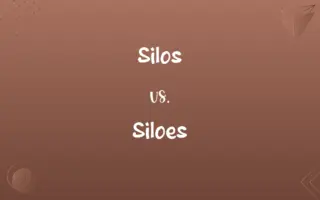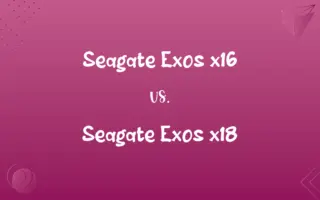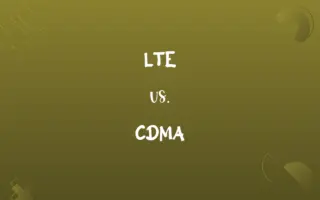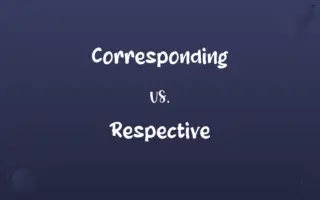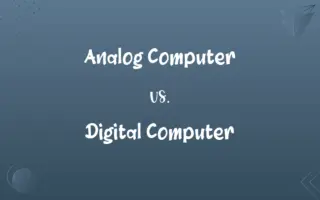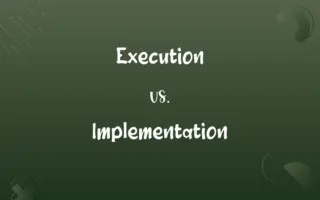Frontside Bus vs. Backside Bus: Know the Difference

By Shumaila Saeed || Updated on December 25, 2023
The Frontside Bus (FSB) connects the CPU to the main memory, while the Backside Bus (BSB) connects the CPU to the cache memory.

Key Differences
Frontside Bus (FSB) is the main interface between the CPU and the system memory (RAM), facilitating data transfer between them. Backside Bus (BSB), on the other hand, is a secondary bus, typically used for connecting the CPU to its internal cache memory (L2 or L3), allowing for faster data access.
Shumaila Saeed
Dec 15, 2023
The FSB operates at a lower speed compared to the BSB, as it deals with a broader range of system components, resulting in potentially slower data transfer rates. In contrast, the BSB is faster, handling the rapid transfer of data between the CPU and its cache.
Shumaila Saeed
Dec 15, 2023
In terms of architecture, the Frontside Bus is a part of the motherboard's chipset, serving as a critical pathway for data communication. The Backside Bus, however, is typically integrated within the processor die, providing a more direct and quicker path to the cache memory.
Shumaila Saeed
Dec 15, 2023
The FSB's performance can be a bottleneck for overall system performance, especially when handling high volumes of data. The BSB is designed to alleviate this by providing quick access to frequently used data stored in the cache.
Shumaila Saeed
Dec 15, 2023
While the Frontside Bus has been a key component in older CPU designs, modern processors often use other technologies for CPU-memory communication. Conversely, the Backside Bus remains integral for efficient cache memory operations in many modern CPUs.
Shumaila Saeed
Dec 15, 2023
ADVERTISEMENT
Comparison Chart
Speed
Generally slower due to broader range of connections
Faster, as it connects to internal cache
Shumaila Saeed
Dec 15, 2023
Performance
Can be a bottleneck in system performance
Enhances CPU performance by fast cache access
Shumaila Saeed
Dec 15, 2023
Architecture
Part of the motherboard's chipset
Integrated within the CPU die
Shumaila Saeed
Dec 15, 2023
Modern Usage
Less common in modern CPUs, replaced by newer technologies
Still used in modern CPUs for efficient cache access
Shumaila Saeed
Dec 15, 2023
ADVERTISEMENT
Frontside Bus and Backside Bus Definitions
Frontside Bus
The Frontside Bus is the primary communication channel between the CPU and the main memory.
The computer's performance is largely dependent on the speed of its Frontside Bus.
Shumaila Saeed
Dec 04, 2023
Backside Bus
The Backside Bus connects the CPU directly to its cache memory.
The Backside Bus is crucial for fast access to the CPU's cache.
Shumaila Saeed
Dec 04, 2023
Frontside Bus
The Frontside Bus functions as the main pathway for data flow in a computer.
A faster Frontside Bus ensures quicker data processing.
Shumaila Saeed
Dec 04, 2023
Backside Bus
BSB is used for high-speed data exchange between the CPU and its internal cache.
A high-speed Backside Bus contributes to the efficiency of the CPU.
Shumaila Saeed
Dec 04, 2023
Frontside Bus
FSB is a critical component of a computer's motherboard architecture.
The Frontside Bus capacity determines the maximum data transfer rate.
Shumaila Saeed
Dec 04, 2023
ADVERTISEMENT
Backside Bus
The Backside Bus enhances computing efficiency by quickening cache access.
Optimizing the Backside Bus can significantly improve data retrieval speeds.
Shumaila Saeed
Dec 04, 2023
Frontside Bus
FSB is the conduit for data transfer between the CPU and system memory.
Upgrading the Frontside Bus can enhance overall system speed.
Shumaila Saeed
Dec 04, 2023
Backside Bus
The Backside Bus operates as a secondary, faster channel in a CPU.
The presence of a Backside Bus reduces the load on the Frontside Bus.
Shumaila Saeed
Dec 04, 2023
Frontside Bus
The Frontside Bus acts as the central data highway in traditional computer designs.
Modern computers sometimes replace the traditional Frontside Bus with more advanced technologies.
Shumaila Saeed
Dec 04, 2023
Backside Bus
BSB is integral to modern CPUs for rapid cache communication.
The Backside Bus is less known but vital for CPU performance.
Shumaila Saeed
Dec 04, 2023
Repeatedly Asked Queries
Why is the Backside Bus important?
It provides fast access to cache, speeding up CPU operations.
Shumaila Saeed
Dec 15, 2023
What is a Frontside Bus?
It's the main data connection between the CPU and system memory.
Shumaila Saeed
Dec 15, 2023
How does the Frontside Bus affect computer performance?
It influences data transfer speed between the CPU and RAM, affecting overall system performance.
Shumaila Saeed
Dec 15, 2023
Is the Backside Bus faster than the Frontside Bus?
Generally, yes, as it deals with a more direct and limited data path.
Shumaila Saeed
Dec 15, 2023
Can the Frontside Bus be a bottleneck?
Yes, if it's slower than the CPU and memory speeds, it can limit overall performance.
Shumaila Saeed
Dec 15, 2023
What is a Backside Bus?
It connects the CPU to its cache memory for faster data access.
Shumaila Saeed
Dec 15, 2023
What factors affect the performance of the Frontside Bus?
Its clock speed and bandwidth.
Shumaila Saeed
Dec 15, 2023
How do I know my Frontside Bus speed?
It's usually listed in the motherboard or CPU specifications.
Shumaila Saeed
Dec 15, 2023
Do all CPUs have a Backside Bus?
Most modern CPUs have some form of a fast connection to cache, often referred to as a Backside Bus.
Shumaila Saeed
Dec 15, 2023
Does the Backside Bus size matter?
Yes, a wider bus allows for more data to be transferred simultaneously.
Shumaila Saeed
Dec 15, 2023
What is the typical speed of a Frontside Bus?
It varies, but older systems range from 66 MHz to over 1000 MHz.
Shumaila Saeed
Dec 15, 2023
Are Frontside Buses still used in modern computers?
Less frequently, as newer technologies have emerged to replace them.
Shumaila Saeed
Dec 15, 2023
Can I upgrade the Frontside Bus separately?
It's not a separate component; it's part of the motherboard and CPU design.
Shumaila Saeed
Dec 15, 2023
How does the Backside Bus affect gaming performance?
It can enhance performance by speeding up CPU-cache data exchange.
Shumaila Saeed
Dec 15, 2023
Are there any downsides to a fast Backside Bus?
Not typically, as it's designed to enhance CPU performance.
Shumaila Saeed
Dec 15, 2023
Is the Backside Bus visible on the motherboard?
No, it's typically integrated within the CPU.
Shumaila Saeed
Dec 15, 2023
What happens if the Frontside Bus is too slow?
It can slow down data processing and overall computer performance.
Shumaila Saeed
Dec 15, 2023
Can the Backside Bus be upgraded?
It's a part of the CPU design and cannot be upgraded separately.
Shumaila Saeed
Dec 15, 2023
How does cache memory on the Backside Bus improve CPU performance?
By providing rapid access to frequently used data.
Shumaila Saeed
Dec 15, 2023
Can upgrading the Frontside Bus improve my computer?
It can, but it's often limited by the CPU and motherboard capabilities.
Shumaila Saeed
Dec 15, 2023
Share this page
Link for your blog / website
HTML
Link to share via messenger
About Author
Written by
Shumaila SaeedShumaila Saeed, an expert content creator with 6 years of experience, specializes in distilling complex topics into easily digestible comparisons, shining a light on the nuances that both inform and educate readers with clarity and accuracy.










